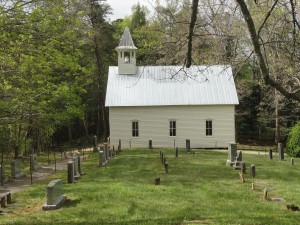Why Do We Have Baptists in the First Place?
by Matt Shrader

In a day and age when Southern Baptists are the largest Protestant denomination in America and Baptist churches are seemingly everywhere, it is easy to ask what Baptists are all about and even why are they so prevalent. There is no short answer but I think that a brief general account of their beginnings can help begin to answer these questions. Since their beginnings, Baptists have recognized a few ideas as important for the life of a local church and hopefully you can see them through this short paper.
A Note about Origin Theories:
There are three general theories for the beginnings of Baptists. The first is that they have their origins in the New Testament and there is a thread of Baptist churches (though not called that by name) all throughout the church’s history. The second is that Baptists have their origins in the Anabaptist Reformation of the sixteenth century. The third is that Baptists have their origins in the later English Reformation of the late sixteenth and early seventeenth century. Very few hold to the first view anymore and those who hold the second are dwindling as well.1 The reasons have to do with the ability to show genetic connection (i.e., direct influence and historical connection) either explicitly or implicitly.2 Travelling backward through time Baptists trace a clear line to the London Confession of Faith in 1644, wherein a few defining ideas are crystallized. But, how much farther back can we go? We need to find those who made this confession and those who first held the central ideas contained in this confession.
Reformation in England:
The Reformation in England began under the reign of Henry VIII though it did not take permanent hold until Elizabeth I came to the throne in 1558.3 In general terms, the Church of England was “Protestant in theology but largely medieval in its pattern of worship and liturgy and in which the monarch held the reins of power.”4 It did not take long before several were unsatisfied at the extent of reformation. The Puritans sought to continue the English Reformation within the Church of England. The Separatists felt that they needed to leave the Church of England in order to attain the reformation they wanted. Out of these Separatists and Puritans came Baptists and their ideas.5
Robert Browne was one Separatist whose famous works, A Treatise of Reformation Without Tarrying for Anie and A Booke Which Sheweth the Life and Manners of All True Christians, provided a seminal presentation of the idea that the government could not compel religion, plant churches, or govern the activities of churches. The Separatists differed from the Puritans over the nature of the church. B. R. White explains it like this: “The Church was claimed to be a fellowship of believers which must be separated from the ungodly and the uncommitted. … The Congregation had power to appoint and, if need be, to dismiss its ministers. Final authority lay with the whole body of the congregation.”6 And so Puritans and Separatists, though both disagreeing with the Church of England on the extent of the Reformation, also disagreed with each other.
The Puritans experienced difficulties when Richard Bancroft became Archbishop of the Church of England in 1604 and began his heavy anti-Puritan polemic. In regard to the Separatists, persecution arose because of the growth of churches outside the government’s jurisdiction. “Their very act of separation from the established Church was regarded at the time as a manifestation of civil disobedience.”7 Browne actually recanted his views on government involvement in religion. His ideas continued, though, with great political consequence. Some recanted, many were imprisoned, some died in prison, a few were executed, and others fled to Holland for religious refuge. Among those that fled to Holland, the most important for Baptist history are the figures of John Smyth and Thomas Helwys.
General Baptists:
After a few Separatist groups began to gather in Holland, differences arose. John Smyth was one pastor who took his congregation out of England to avoid persecution. When they arrived in Amsterdam, they were not the first separatist congregation. And, they had important differences with the current separatist church led by Francis Johnson. They disagreed over the duties of a pastor, the number of required pastors, and the general way the church was to be run. The result was that the churches separated from each other, including a group within Smyth’s church that disagreed with their pastor, with a group relocating to Leiden and then eventually sailing to the New World and Plymouth, Massachusetts.
Smyth continued his controversial career by becoming the first separatist to reject infant baptism. Since he doubted much that came from the Church of England, he concluded that his infant baptism within that church was suspect. Upon investigation of the Bible he rejected infant baptism and affirmed credo-baptism (baptism only after confession of faith). He then compounded the controversy when he baptized himself and his church. As can be understood, many challenged these ideas and accused Smyth of being influenced by Anabaptists. This accusation was serious because Anabaptists were generally seen through the lens of the notorious Münster rebellion in 1534-1535. Smyth decided to approach an Anabaptist group in Amsterdam known as the Waterlander Mennonites to discuss their views of baptism and church government. As he was searching this out, Smyth was convinced of the view of salvation taught by Jacobus Arminius and being debated throughout Holland. This general view of election (as opposed to particular) became a denoting factor among later Baptists. After speaking with the Waterlanders, Smyth decided his own baptism had been hasty and so he assimilated into their congregation.
Not all of Smyth’s church agreed with this plan. Thomas Helwys (pronounced “Ellis”) was a deacon in Smyth’s church who had agreed with Smyth up to the point of denouncing his baptism at the hands of Smyth. When Smyth decided to join the Waterlanders, Helwys’s group returned to England and implanted their Baptist ideas into English soil. Importantly, Helwys was a strong advocate for religious liberty. His book, A Short Treatise on the Mistery of Iniquity (1612), was the first book arguing for religious toleration written in England. This idea attacked not only the Church of England, but also the Puritans and Separatists. Smyth published his book advocating religious liberty at about the time he returned to England. He was promptly arrested and died in prison a few years later. The views of his congregation, which included credo-baptism, religious liberty, church leadership through a multiplicity of pastors, and a general view of the atonement, were successful and multiplied their numbers in the coming decades.8
Particular Baptists:
Particular Baptists hold to a more Calvinistic view of salvation than the General Baptists. They also had their origins more among the Puritans and had a much larger following. Most historians point to the London church pastored successively by Henry Jacob, John Lathrop, and Henry Jessey as an important root of the Particular Baptist movement. Under Jacob and Lathrop, the church was a Puritan church that believed true churches did exist in the Church of England, but they needed reforming. This church produced at least two Separatist offshoots and saw both Jacob and Lathrop emigrate to the New World. When Jessey became the pastor in 1637 it continued on the same line until the issue of infant baptism came up.
In 1638, a famous document, “The Kiffen Manuscript”, noted that several people rejected infant baptism and were instead baptized as believers. They joined a church lead by John Spilsbury, which is probably the first Particular Baptist Church in England. The Jessey church was doing well in this time and split for the sake of its size in 1640. Again, baptism became an issue. This time the discussion was around the mode of baptism. Richard Blunt, a member of the church was convinced that baptism should be done only by the mode of immersion, based on Colossians 2:12 and Romans 6:4. Under the blessing of his church, he was sent to Holland to speak to Mennonites (the Collegiants) about this interpretation of scripture. When he returned, he began the practice of immersion. This spread to other churches within London, including the Spilsbury church.
Within London there were at least seven Particular Baptist churches by 1644. They did not all agree on immersion, but they did agree on credo-baptism. This created a great controversy within London as they were accused of being Anabaptists, among other things. Their response to this situation was historic. Michael Haykin describes it like this: “In order to dispel this confusion, refute other charges that had been leveled against them, and demonstrate their fundamental solidarity with Calvinists throughout Western Europe, these Particular Baptists issued the First London Confession of Faith in 1644.”9
The difference of this confession of Faith, which was reissued in a second 1646 edition, with anything prior is important. It differs from the Anglican Thirty-Nine Articles, the Separatist Confession of 1596, and the contemporaneous Westminster Confession of Faith (1646). The main areas of difference cannot be overstated as they provided a self-understanding for these Baptists that distinguished them from other groups.10 The first area of difference was that the church was comprised of only converted believers (not infants) and they must be baptized as a confession of faith. Second, the authority of the pastor was placed under the rule of the church as a whole. Third, each church was autonomous from the State and from each other. While these ideas are important, it should be remembered that these Baptists did not see themselves as acting out of line with the history of the Church. Their confession contained the important new differences but also the important agreements they had with the Christian tradition.
Conclusion:
While I traced a different history between the General and the Particular Baptists, it should be remembered that their ideas were not completely distinct, even in the ideas of salvation, where specifically they agreed with one another on conversion, baptism, and local church autonomy.
The previous Aletheia article contained a historical exposition of the Anabaptist Balthasar Hubmaier and his understanding of believers’ baptism. While he and many other Anabaptist leaders held to this important idea, they did not hold to other ideas central to Baptists. Indeed, the one or two places where we can trace Baptists being influenced by Anabaptists (Mennonites in Holland for example), they refused to join the Anabaptists because of their differences. Further, the London Confession of 1644 had as one purpose to distinguish themselves from Anabaptists largely because of the political stigma surrounding the name. Genetically and self-confessedly, Baptists come out of the later English Reformation. The ferment created by the ongoing debates concerning the nature of the church resulted in the unification of a new group of people around a particular set of ideas, while also not rejecting theological ideas central to orthodox Protestantism and the Christian tradition.
One unique part in the origins of the Baptists is the political circumstance of England at the time. The political circumstances that allowed or persecuted different viewpoints from the Roman Catholic Church to the Church of England to Puritans to Separatists to Baptists all were dependant on the legality of their beliefs at certain times. And, for the decades following the London Confession of 1644 and 1646, England found itself to be politically tolerant of dissenting views as a result of the English Civil war and then the subsequent rule of Oliver Cromwell (1642-1651, 1651-1658). These decades of tolerance, and the spread of Baptist ideas through soldiers in Cromwell’s army, led to Baptist growth in England, Ireland, and Wales. After Cromwell’s death in 1658, religious toleration ended and persecution resumed. That is the time when early Baptists such as John Bunyan preached, but that is a story for another day.
As the offspring of the English Puritans and Separatists, Baptists since their beginnings have also recognized the importance of a church continually learning and reforming. They looked to fashion their church practices based on their understanding of Scripture but also within a confessional structure faithful to the beliefs of historic Christianity. Conversion prior to baptism and church membership, the autonomy of each church, and the plea for religious liberty stood at the center of this fresh understanding. Several centuries later these ideas are at still at the center of Baptist belief and practice.
Final thoughts about studying history
I have written the last four articles about church history and then about a couple moments in church history. In the first two I spent my time giving the why and the how. In the last two I spent my time showing examples of putting these historical practices to work. The two examples are worth contrasting. The article on Hubmaier pays attention to the historical situation of Hubmaier but gives the majority of the space to actually diving into the writing of Hubmaier. In contrast, the article on Baptist beginnings pays attention to the actual ideas but spends more time on the historical situation. In both articles, the ideas and the historical situations are important. And, for the Baptist beginnings article I did spend time reading some of the primary works, like was done with Hubmaier. While it is important to do solid historical work as I outlined in the second article, the ultimate goal is to understand not only what is being said but more importantly what the people are doing with what they say. When we get at those questions, then history begins to teach and challenge us.
And, we must remember why history is important. We are fallen human beings who are limited in our understanding. God accommodated to our weaknesses by giving us Scripture. The Holy Spirit inspired the words of Scripture and the Spirit indwells and illumines believers from all ages. When Spirit-indwelled believers in their own historical situations offer their Spirit-illuminated understandings of Scripture, we would do well to try our best to understand and learn from them.
Notes:
- William R. Estep, The Anabaptist Story: An Introduction to Sixteenth-Century Anabaptism (Grand Rapids: Eerdmans, 1995); and Malcolm B. Yarnell III, The Anabaptists and Contemporary Baptists: Restoring New Testament Christianity (Nashville: B & H Academic, 2013).
- One great source for this discussion is: Stephen Wright, The Early English Baptists, 1603-1649 (Woodbridge, Suffolk: The Boydell Press, 2006), 1-11.
- For a general overview of the English Reformation, a good start is: Diarmaid MacCulloch, The Later Reformation in England, 1547-1603, second edition (Houndsmill, UK: Palgrace, 2001).
- Anthony L. Chute, Nathan A. Finn, and Michael A. G. Haykin, The Baptist Story: From English Sect to Global Movement (Nashville, B & H Academic, 2015), 14.
- David W. Bebbington, Baptists Through the Centuries: A History of a Global People (Waco: Baylor University Press, 2010), 7-41; and Thomas S. Kidd and Barry Hankins, Baptists in America: A History (New York: Oxford University Press, 2015), 1-7.
- B. R. White, The English Separatist Tradition: From the Marian Martyrs to the Pilgrim Fathers (London: Oxford University Press, 1971), 166.
- White, The English Separatist Tradition, 87.
- Though, Bebbington relates that the later General Baptists may or may not have been direct descendants of Helwys’s congregation: Bebbington, Baptists Through the Centuries, 39-40.
- Chute, Finn, and Haykin, The Baptist Story, 25-26.
- Still the best source for Baptist confessions is William L. Lumpkin, Baptist Confessions of Faith (Philadelphia, The Judson Press), various years.









